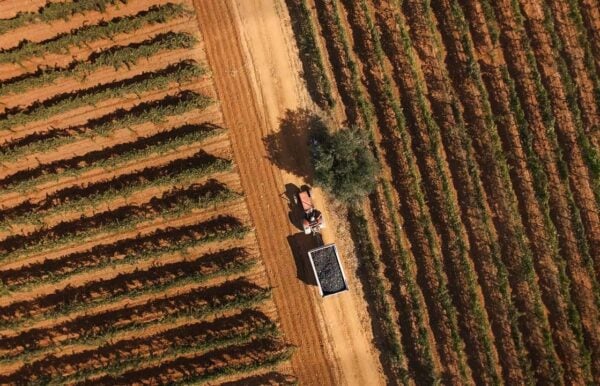Sustainability has always been at the heart of Cantine Settesoli’s business strategy. But this decision is not purely based on an ethical need, it is a key driver of innovation and value creation for our company, our wines and our stakeholders.
Sustainability is supported and encourages at every management level, from the Board of Directors and winegrowers to the wine cellar. A total of 5 people from our quality team are involved in the implementation of the company’s sustainability roadmap.
Sustainability in Facts and Figures
Ecological Footprint
Cantine Settesoli periodically analyses the following parameters:
Water consumption and water pollution
Since 2000, the efficient management of water resources has become a priority in EU programmes, which aims to facilitate the development of innovative solutions in the water sector on a European scale. The objectives of the 2014/2020 Council Agricultural Policy are also aimed and incentivising production methods that allow for the use of the least resources possible, including water. With regard to the winegrowing and wine making industry, water management is fundamental for achieving an efficient production chain management system. In fact, water is a vital resource not only in the vineyards but also in the wine cellar. Consequently, the evaluation of our water footprint is fundamental. This is achieved by comparing the volume of fresh water that is used and polluted, also in relation to the production site, taking into consideration the complete range of potential issues to ensure a broad and detailed vision of their impact.
The exploitation of the territory
In order to rationalise and calculate the link between the wine and the territory from which it originates, it is necessary to identify, in a practical and univocal manner, the repercussions of the company’s activities on biodiversity, society and the economy, specifically in terms of the landscape and the local community. This is carried out using three principal sub-indictors:
Landscape and Biodiversity: Company activities targeted at protecting the environment, biodiversity, ecosystems of the landscape, intended as the characteristics of the comprehensive natural and manmade elements in a given area;
Society and Culture: company activities that have repercussions on society and the local community of which it is part, i.e. local workers, local producers, who develop and/or promote the cultural heritage of the territory where the same company is based;
Economy and Ethics: company activities that have a positive economic impact on the territory and those related to corporate ethics, including the repercussions on consumers.
Waste – ISO 14001
To achieve a balance between the environment, society and the economy, we must “meet the needs of the present without compromising the ability of future generations to meet their own needs”. As an objective, sustainable development can be reached through a balanced application of the three pillars of sustainability. Society’s favourable view of sustainable development, transparency and integrity has evolved alongside increasingly tighter regulations, the growing pressure of pollution on the environment, an inefficient use of resources, inappropriate waste management, climate change, the degradation of the ecosystem and the loss of biodiversity. This has led to companies adopting a systematic approach to environmental management, through the implementation of environmental management systems, in which company’s aim to make their own contribution to the environmental pillar of sustainability.
CO2 Emissions and Air Pollution
Ensure the company’s economic development is compatible with social equity, environmental balance and the economic sustainability of the company, through the evaluation of the impact on the greenhouse-effect, particularly due to gases, recognised by the IPCC as significant (carbon dioxide, methane, nitrous oxide, fluorocarbons and sulphur hexafluoride). Given that for many years climate change has been posed as one of the most serious and complex challenges that mankind has to face and, more specifically, that global warming seems to be connected to an increase in the concentration of GHG in the atmosphere, we must be conscious of our own GHG emissions and measure them at every stage of the production cycle, with the aim of managing the efficiency of the chain, environmental impact and its potential impact on the greenhouse-effect.
Active photovoltaic systems
Latest generation photovoltaic systems
kWh Produced in 2022 by the photovoltaic system
Energy produced for self-consumption in 2022
Recycled glass
Labels produced from virgin wood-free paper
Cartons produced from paper without virgin wood fibre
Certifications
14001

Provide organisations with an framework for protecting the environment and respond to changes in environmental conditions, in equilibrium with the socio-economic needs of the context. A systematic approach to environmental management can provide senior management with information on building long-term success and also creates opportunities that can contribute to sustainable development: protecting the environment through prevention or mitigation of negative environmental impacts; mitigating the potential negative effects of environmental conditions on the organisation; supporting the organisation in its fulfilment of its obligations; improving environmental performance; controlling or influencing the way the organisation’s products and services are designed, manufactured, consumed and disposed of through a life-cycle approach that is aimed at avoiding the involuntary transfer of the environmental impact to another phase of the life-cycle; achieving financial and operational benefits that derive from the implementation of valid environmental alternatives that can strengthen the organisation’s market position; and communicating environmental information to the relevant interested parties.
50001

The consequences of excessive energy consumption, caused by an unsustainable quali-quantative development of industrial activities, are not only environmental but also social and financial. For this reason, the theme of energy efficiency now poses itself as a key element of sustainability, in all of its facets. The objective is to enable organises to establish the necessary systems and processes for improving energy performance in terms of efficiency, use and consumption. This is achieved through the application of various tools that allow for the individualisation, implementation, maintenance and improvement of an energy management system, which allows the organisation to follow a systematic approach aimed at constantly improving its energy performance, and provide companies with a framework that allows them to manage their energy performance and relative costs in the most efficient way possible, while at the same time sustaining modes of action that reduce environmental impact and greenhouse gas emissions.
VIVA
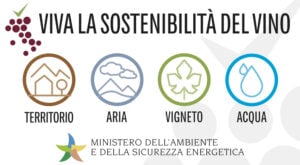
The voluntary efforts of companies to reduce greenhouse gas emissions are playing an increasingly important role in reinforcing the regulations imposed by the laws and government policies within the Kyoto Protocol and the ‘Climate and Energy Package’. Within this context, the goal is to improve the sustainability performance of the viticulture production chain, through the analysis of four key indicators (air, water, vineyard and territory). The objective is to achieve a measurable and accredited sustainable management standard for the wine production sector that can be managed within a quality system, becoming a univocal reference point for Italian production, as well as a calling card for ‘Made in Italy’ products on the international market.
CARBON FOOT PRINT

The Carbon Footprint (CFP) is quantified and reported by calculating the carbon footprint of a company’s products, providing the opportunity to better understand the best ways to reduce the same. The carbon footprint is calculated by evaluating the GHG emissions released and removed during a product’s lifecycle. This is based on the LCA approach found under the climate change impact category. The calculation takes into consideration the emissions rate of the extraction and transformation of the raw materials, including the production, distribution, use and end of life of the product. In this way, the CFP study allows us to quantify the CO2 footprint of the product in question. The main advantage of this is that it provides the possibility to identify ways to reduce the CFP, making it much easier to prove the environmental performance of the product, which increases the credibility of the company’s environmental communications and reduces the risk of greenwashing.
WATER FOOT PRINT

The exploitation of natural resources, caused by the phenomenon of economic development, demographic growth and climate change, has led to an acceleration in the depletion process of these resources. Consequently, it is fundamental to assume a more responsible attitude towards the management of our water sources. The Water Footprint represents an effective tool for measuring the amount of water used in the production processes and is fundamental for evaluating the environmental impact of such activities. Water Footprint analysis allows us to measure the impact of a given product, process or organisation which, in turn, allows for the adoption of unified prevention methods, enabling us to provide comparable and communicable results for the end consumer. The analysis is based on the life cycle approach, which takes into account the water management process throughout the entire production chain, including end-of-life disposal.
FOOD SAFETY – BRCGS
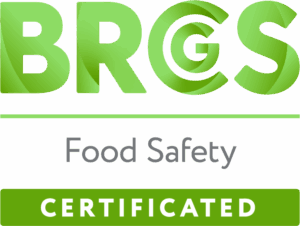
BRCGS Global Standard for Food Safety. Improve your capability to consistently meet customer expectations of food safety and quality while reducing costs of supply chain management. Certification of your food manufacturing system to BRCGS food safety standard demonstrates your commitment to the product safety, quality and legal compliance, and to ensure the protection of the consumer. The standard provides specific requirements for a food production and packaging management system that will enhance your ability to consistently deliver products and services that meet customer, as well as statutory and regulatory demands.
FOOD SAFETY – IFS

The IFS Food Standard (IFS) is an international standard based on a shared evaluation method to qualify and select food product suppliers. The goal is to build trust in products and processes by ensuring safety, quality, legality, and compliance with specific customer requirements. IFS Food is an international standard for evaluating the compliance of products and processes to food safety and quality. The IFS Food standard applies to suppliers at all stages of food processing after the agricultural stage. The requirements relate to the quality management system and the HACCP system (Hazard Analysis & Critical Control Points), supported by detailed prerequisite programs, which are a set of GMP (Good Manufacturing Practice), GLP (Good Laboratory Practice), and GHP (Good Hygiene Practice) requirements.
QUALITY

Quality Management System: The standard is based on a series of quality management principles, including a strong focus on the customer, the involvement of company management, a process approach, and continuous improvement. ISO 9001 establishes criteria for a quality management system that focuses on the effectiveness of quality processes, helping work more efficiently and reducing product errors. It promotes the adoption of a process approach based on risk analysis, emphasizing the requirements, added value, performance, and effectiveness of processes, and continuous improvement through objective measurements. It is based on the High-Level Structure (HLS) of ISO, a set of 10 clauses on which all ISO standards are based.
TRACEABILITY

Traceability in the Agri-food Supply Chain: Traceability is a key aspect of both legislation regulating the agri-food sector, such as the European Union law 178/2002, and voluntary standards for food safety adopted by companies, such as the UNI EN ISO 22005:2008 standard. The ISO (International Standardization Organization) and the Italian equivalent UNI (Ente Nazionale Italiano di Unificazione) promote this technical standard to encourage a harmonized approach to traceability systems, in line with the best available practices. ISO 22005 provides the general principles and basic requirements for designing and implementing agri-food traceability systems. A safe food product is the result of a series of processes and transformation activities carried out along the entire food supply chain. By applying food traceability (ISO 22005), it is possible to quickly retrieve all the specific safety and quality information of the products and, if necessary, implement product withdrawal and recall plans. Certification of agri-food supply chain traceability, thanks to the ISO 22005 standard, allows to identify and track every aspect of the activities of operators involved in the process, from the farm to the consumer’s table.
PRODUCT CERTIFICATION
- ORGANIC

Organic production is a comprehensive system for managing farms and agri-food production based on the interaction between best environmental practices, a high level of biodiversity, the safeguard of natural resources, the application of strict animal welfare criteria, and production that meets the preferences of certain consumers for products obtained through natural substances and processes. The organic logo and labeling system aim to ensure the consumer that the product they are purchasing has been obtained in full compliance with the European Regulation on organic farming and national legislation, or in the case of imported products, according to equivalent or similarly strict rules. Starting from July 1, 2010, the use of the new logo became mandatory for all organic products made in compliance with EU regulations. - 100% VEGAN
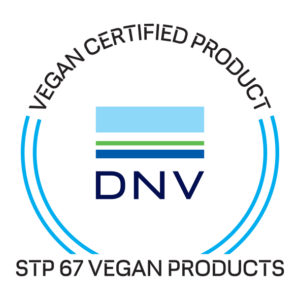
Technical Specification for Vegan Food Products: This technical specification defines the characteristics and requirements for the certification of vegan food products, meaning those that do not contain raw materials, ingredients, or animal-derived additives, also controlling contamination risks. The specification considers the following reference regulations: Regulation (EC) No 1829/2003 and 1830/2003 of the European Parliament and of the Council of September 22, 2003; UNI EN ISO 22005:2008; Reg 1169-2011; ISO/IEC 17065; European Vegetarian Union, September 2015. The certificate of compliance to the Technical Specification for Vegan Food Products aims to easily identify a product with the characteristics sought by the vegan population in line with their lifestyle, namely one that does not contain any animal-derived raw materials, ingredients, or technological additives, while also controlling cross-contamination risks, defined as the direct or indirect transfer of unwanted material and/or ingredients.
JAPAN AGRICULTURAL STANDARDS (JAS)

The Japan Agricultural Standards (JAS) is the mandatory certification required to export and market organic products in Japan. The standard certifies agricultural, livestock, and processed products intended for human consumption, including wine. Under the existing equivalence agreements with the European Union, Japan has recognized the validity of the EU Organic Certification (Regulation EC 848/2018) for plant-based products.
Headquarter
Menfi
138,01 kWh
Energy production: data relative to the daily time span
updated every 30 min.
4,27%
Self-consumption: data relative to the daily time span
updated every 30 min.
Bottling
Menfi
462,02 kWh
Energy production: data relative to the daily time span
updated every 30 min.
18,57%
Self-consumption: data relative to the daily time span
updated every 30 min.
Puccia
Menfi
303,96 kWh
Energy production: data relative to the daily time span
updated every 30 min.
100,00%
Self-consumption: data relative to the daily time span
updated every 30 min.
The SOSTAIN project – Sustainability in viticulture
“Sustainability” is an extremely relevant word today. It means to make something last over time – you could look at it a bit like the pedal on a piano that makes the note last longer.
In viticulture, sustainability is an approach based on measuring and reducing the environmental impact of the processes carried out in the vineyard.
The sustainability programme, launched by Sostain Sicilia, of which Cantine Settesoli is a member, is an important competitive driver, especially on the overseas market, because it promotes the territory of Sicily as a whole, including its winegrowers and wine companies.
The foundation’s objective is to promote ethical and sustainable development in the Sicilian wine production sector, guiding wine cellars towards the constant measurement and impact reduction of their agricultural practices on the territory: a new environmentally-themed challenge proposed by the Consorzio di Tutela Vini Doc Sicilia and Assovini Sicilia associations, united in their mission to lead wine producers on the path to an all-encompassing environmental protection programme.
SoStain starts from the premise that the impact of agricultural activities goes beyond the confines of the vineyard; they can also affect the wellbeing of the workers and consumer health; they impact the entire local community, the surrounding territory and the conservation of natural resources.
The programme follows a strict regulatory process with ten minimum requirements, which range from measuring the carbon and water footprint, controlling bottle weight, and conservation of the biodiversity of the flora and fauna, right the way through to the enhancement of and respect for the human and territorial capital, energy saving and consumer health.



